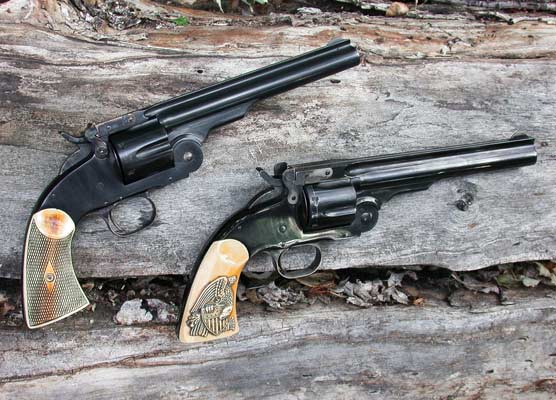“Real” German Metrics In Africa
Gun Show In The Bush
Hearing the name Kobus, pronounced “Qwi-biss,” grabbed my attention. Anyone having such a colorful name surely lived an adventurous life. I was in South Africa and my host was talking about his neighbor who lived on the other side of the mountain. Meeting Kobus was no disappointment — he lived up to his name. With looks displaying a lifetime of working outdoors, he was weather-worn and tough, like a hickory fence post.
I met Kobus during a cull hunt/product testing adventure at the Buffalo Bore Game Preserve. A 3rd generation sheep/goat farmer, his farm borders the Preserve and he’s the closest neighbor residing on the other side of the mountain with his wife, Elise. We first meet at the cookout, or braai, at the Preserve. Naturally, talk turned to hunting and guns after dinner.
The conversation and fellowship carried over to the next day when Kobus invited us for a visit at his home to show us his guns. I could smell the makings of a story to share with you. I was excited.
Show & Tell
Arriving mid-morning, Kobus was finishing up his many morning chores and pulls up in his pristine ’81 Toyota pickup truck, or as they say, bakkie. Entering the cozy living room, one can’t help but notice the beautiful mounts on the wall from previous hunts. Beautiful representatives of kudu, impala, warthog and bushbuck are represented, as well as a leopard skin and numerous photographs.
Kobus didn’t waste time as he started bringing out rifles, one at a time, and telling us about them. Being a dedicated sportsman, he has several in different calibers, each for specific hunting species and circumstances. Top quality glass is mounted on his rifles with names like Leupold, Swarovski and Schmidt & Bender.
Marvelous Mausers
I was excited seeing Kobus’ vintage sporterized Mausers, the first being a beautiful 9.3×62. A classic African cartridge designed by Otto Bock in 1905, it quickly became popular among German settlers in Africa needing an affordable rifle powerful enough for double duty, be it shooting garden-raiding Cape buffalo or self-defense from anything else.
The 9.3×62 is basically a European .35 Whelen. Its bullets are 0.008″ large 0.366″ and its neck a bit shorter, giving it a little more powder capacity. A tad more powerful than the Whelen, it’s not quite as powerful as the .375 H&H but sits happily between the two in the power spectrum.
Its versatility is tops for usefulness, practicality and availability in European nations. The 9.3×62 is still popular in Europe due to its performance, balance and history.
7mm Mauser
The last gun Kobus showed us is really a gem. Kobus said it saw use in the Boer War of 1899–1902 in South Africa. It was converted from its issued-military guise to a beautifully sporterized hunting rifle displaying an octagonal barrel, sculpted stock and other skillful administrations. It’s the rifle Kobus is holding in one of the photos.
During the Boer War, the British knew the Boers were deadly out to 800 meters with their 7mm Mausers. They soon learned this distance was stretched out to over 1,200 meters.
The 7mm Mauser was a very popular military cartridge in South America and is beloved by hunters today. Designed by Paul Mauser in 1892, the 7mm Mauser was well respected and feared depending on which side of the muzzle you were on. A smokeless powder cartridge, its high velocities of the day gave it a great advantage with its flatter trajectories.
Hunting
The 7mm Mauser casts a romantic spell with its hunting history going back to the days of WDM “Karamojo” Bell and Jim Corbett, just to name a few. The British took to calling the 7mm Mauser the .275 Rigby. In Bell’s case, it’s documented he took 1,011 elephants using six Rigby-made rifles using 173-grain military ball ammo. Corbett was known for killing numerous large maneater “cats” with Rigby-made Mausers in .275 Rigby. These gentlemen with their extraordinary hunting feats are probably more responsible than anyone else, for the 7mm Mauser/.275 Rigby’s popularity and cult-like status.
Last Shot
Seeing such splendid rifles warms one’s heart — it certainly did mine. Being able to hold and shoulder one makes it beat faster. It was a wonderful experience seeing these relics in a land where they were used for their intended purposes, from a friendly sheep and goat farmer who still hunts. It keeps the magic of the hunt alive, as well as the history when holding, seeing and experiencing such grand old guns.








